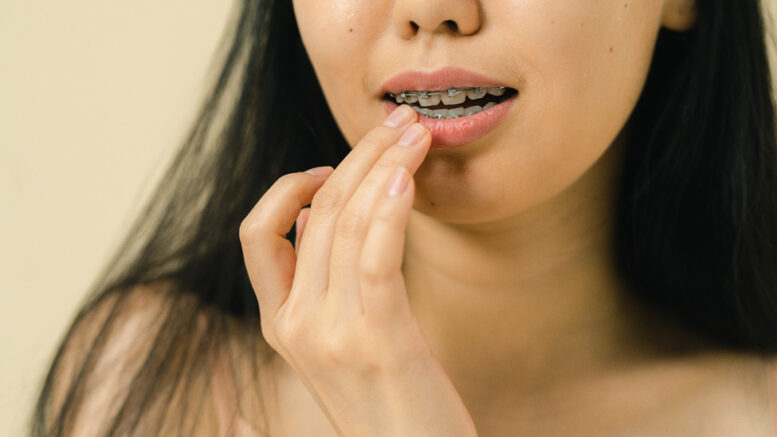Are you considering getting traditional braces to straighten your teeth and give you a radiant smile? You’re not alone! Traditional braces are the most common type of orthodontic treatment used by teenagers and adults. Knowing what to expect when undergoing this process can be useful if you’ve been thinking about making this decision. In this blog post, we will discuss how traditional braces work, why they might be good for certain dental conditions, the approximate timeline for having braces, common issues that may arise during treatment with braces, and various tips on how to manage them successfully. Read on for everything you ever wanted to know about traditional braces!
What are Traditional Braces?
Traditional braces are an orthodontic treatment used to correct misalignments and crooked teeth. Made up of metal brackets, wires, and rubber bands, traditional braces work to gradually straighten the teeth over time by applying steady pressure. They are more commonly used than clear aligners for more severe cases of malocclusions as they have greater control over tooth movement.
Before Treatment Begins
A. Initial Consultation with an Orthodontists
Before beginning treatment, patients will typically have an initial consultation with their orthodontist. After the consultation, competent orthodontists will discuss any concerns or questions the patient may have, review their medical and dental history, complete a physical examination of the teeth and mouth, take X-rays or other diagnostic tests as needed, and create a personalized treatment plan.
B. Diagnostic Tests and X-rays
Many orthodontists will use X-ray technology such as panoramic radiography (panorex) or cephalometric radiography (cephalograph) to assess and diagnose misalignments or tooth issues accurately. These tests allow the doctor to see the structure of the jaw and teeth better, evaluate their positioning, and determine the best course of action.
C. Impressions and Measurements Taken for Customization
Before braces can be placed, impressions of the patient’s upper and lower teeth must be taken to create a custom fit. To do this, an alginate material is used, then poured into a mold to make a replica of the teeth. This mold will be used when constructing the brackets, bands, wires, and other appliances needed for treatment.

Implantation of Traditional Braces
A. Types of Appliances Used in Treatment
The most common appliance used with traditional braces is metal brackets bonded to each tooth’s surface. These brackets are connected by arch wires and secured with tiny rubber bands. Depending on the case’s complexity, additional appliances may be used to help move teeth into proper alignments, such as headgear, palatal expanders, or bite plates.
B. Tightening and Adjustment of Wires, Bands, and Brackets
Once the braces have been placed, patients must return every few weeks so that their orthodontist can adjust them. During these visits, loose bands will be tightened and new ones put in place if needed, while wires will be adjusted or replaced. This process is important for keeping the treatment progressing promptly.
C. Care Instructions for Keeping Appliances Clean and Secure
It is important to properly care for traditional braces to ensure they stay clean, safe, and secure throughout treatment. Patients should be instructed on how to brush their teeth, floss around their brackets, and use a fluoride rinse when needed. Any broken or loose bands should also be reported immediately so that repairs can be made as soon as possible.
After Traditional Braces are Placed
A. Post-Placement Appointments
Patients will need to attend regular follow-up appointments so that their orthodontist can monitor treatment progress and make any necessary adjustments. During these visits, they may have x-rays taken or receive advice and tips on how to care for their braces.
B. Eating and Brushing Habits to Maintain Oral Health
Patients should follow certain eating and brushing habits to ensure that the teeth remain healthy during treatment. Foods that can damage brackets, such as hard candy, popcorn kernels, nuts, and gum, should be avoided. Good oral hygiene practices such as twice-daily brushing with fluoride toothpaste, flossing every day, and using an antimicrobial mouthwash are also necessary to prevent cavities or other problems from developing.
C. Managing Discomfort from Appliances
Once traditional braces have been placed on the teeth, it is normal for some discomfort or soreness to occur as the teeth adjust to their new positioning. Patients may be given wax to put over any sharp edges that might be irritating or a fluoride gel to help reduce inflammation and pain. Over-the-counter medications such as ibuprofen can also be used when needed.
Conclusion
Traditional braces are a popular and effective way to straighten teeth, correct jaw alignment, and address other dental issues. They may not be the most comfortable option in every case, but with regular visits to your orthodontist and proper care, you can expect a straighter smile in no time. For those seeking options for dental implants in San Gabriel, the best treatment plan for your needs starts with talking to a qualified professional who understands your situation. With the right information and guidance, you can achieve the best result possible.
